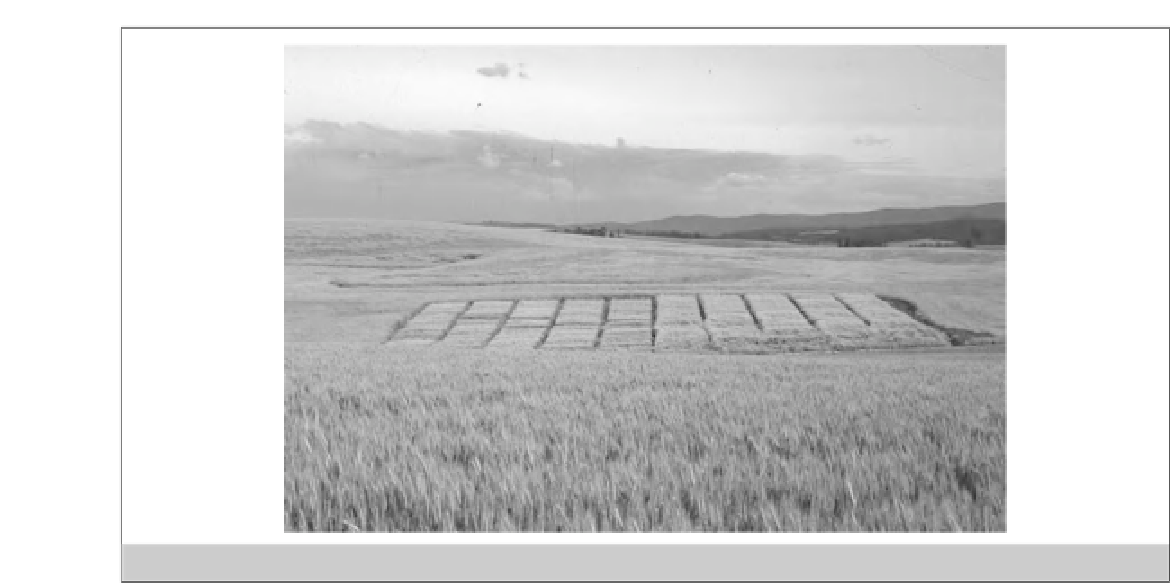Agriculture Reference
In-Depth Information
Figure 7.9
Breeder's trial of advanced selections planted within a farmer's field crop.
Number of locations
The number of locations used for testing will be
dependant on:
There have been many debates regarding the sub-
stitution of more locations in advanced trialling at the
expense of reducing the number of testing years. Obvi-
ously if more locations are evaluated in each year then
fewer years may be necessary to fully evaluate environ-
mental response of test lines. However, it should be
noted that year to year environmental variation is almost
always unpredictable (i.e. climatic), while with between
location variation there will be many predictable envi-
ronmental effects such as soil type. Therefore, it will
always be necessary to assess advanced breeding lines
over more than a single season, and several years test-
ing may be required before a satisfactory decision of
commercial worth can be made. Also, in practice,
when appropriate data have been analyzed the inter-
actions with years are often larger than those with site
or location.
It should be noted that selection is still being car-
ried out amongst lines in the advanced breeder trials
and that this can affect the average performance over
years. For example, consider that in the first advanced
trial 50 breeding lines are tested. The
best
25 lines
will be re-evaluated in year 2 based on their
pheno-
typic
performance in the year 1 trial. Say, the
best
5
lines, now based on phenotypic year 2 performances,
are retained from the year 3 trial and tested in the third
year. After the third year trial, the
best
breeding line
•
Availability of planting material. This is not usually
a major restraint at the advanced selection stage but
may need to be considered.
•
The diversity of environmental conditions through-
out the target region. Obviously, if for example, the
target region is the whole of the United States, then
many sites will be needed, while if a small county is
the only target area of interest then perhaps one or
two local trials will be sufficient.
The magnitude of error variances and genetic vari-
ances applicable to specific trials in any one year or
location. If, from past experience, the environments
for which a new cultivar are targeted are all very
similar (i.e. small variance between sites) then fewer
locations need be considered. If different regions
are markedly different, then more sites would be
required.
•
•
The cost of individual trials and the availability
of sufficient funds to pay for off-station trials. In
the real world, most breeding programmes have
restricted budgets and multi-location trials can often
be expensive in shipping, land rental, staff time and
travel.







